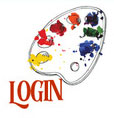
Stats
Member Since January 23, 2025
Love Given: 0
Posts: 0
Love Given: 0
Posts: 0
Badges
Badges go here...
Understanding Modern Media: Shaping Information and Influence
In today’s fast-paced world, media is more than just a source of information—it is a central force in shaping opinions, culture, and communication. From traditional newspapers and television to digital platforms and social networks, media connects people across the globe while also influencing how they perceive events and ideas. Its impact can be seen in politics, education, entertainment, and even personal relationships.
Traditional media, such as print newspapers, radio, and television, remains important for providing verified news and in-depth reporting. These channels often have editorial standards and fact-checking processes that help ensure accuracy. However, the rise of digital media has transformed how people access and share information. Online platforms, social media, blogs, and podcasts allow anyone to publish content instantly, creating both opportunities and challenges. Information spreads faster than ever, but the risk of misinformation and bias also increases.
Media is not just a passive channel; it actively shapes public discourse. The way a story is presented, the language used, and even the images chosen can affect how audiences interpret events. Media literacy, therefore, has become essential. Understanding how to critically evaluate sources, recognize bias, and differentiate between facts and opinions is crucial in navigating today’s media landscape.
Traditional media, such as print newspapers, radio, and television, remains important for providing verified news and in-depth reporting. These channels often have editorial standards and fact-checking processes that help ensure accuracy. However, the rise of digital media has transformed how people access and share information. Online platforms, social media, blogs, and podcasts allow anyone to publish content instantly, creating both opportunities and challenges. Information spreads faster than ever, but the risk of misinformation and bias also increases.
Media is not just a passive channel; it actively shapes public discourse. The way a story is presented, the language used, and even the images chosen can affect how audiences interpret events. Media literacy, therefore, has become essential. Understanding how to critically evaluate sources, recognize bias, and differentiate between facts and opinions is crucial in navigating today’s media landscape.













Great discussion — in a media-saturated world where agenda‑setting and cultivation theories drive how information influences public perception, access to reliable support really matters. If someone’s struggling with a streaming platform or needs help navigating subscription issues, they should check out https://paramount-plus.pissedconsumer.com/customer-service.html — it’s a solid place to find real user feedback and contact options to make their voice heard.